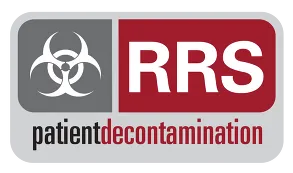
The True Costs of In-House Patient Decontamination vs. Outsourcing
Managing a hospital’s patient decontamination program in-house may seem like a straightforward approach, but have you ever considered the true costs? Many hospital administrators assume that handling decon internally is the most cost-effective option, yet when you factor in staff training, equipment upkeep, compliance risks, and liability exposure, the reality tells a different story.
This blog post breaks down the hidden expenses of in-house decontamination and explores why outsourcing is becoming the preferred solution for hospitals looking to enhance safety, compliance, and cost efficiency.
The Hidden Costs of In-House Decontamination
Many hospitals fail to account for the full scope of costs associated with running an in-house decontamination program. Let’s take a closer look at the areas that add up quickly:
1. Recruitment & Training
Specialized Training Expenses: Decontamination teams require specialized OSHA-compliant training and frequent recertification. For instance, an 8-hour hospital decontamination course can cost approximately $225 per participant. (src: Hazmat)
High Turnover Costs: High turnover leads to repeated hiring and training expenses, further straining hospital budgets.
Lost Productivity: Staff pulled from patient care duties to attend decon training results in lost productivity and potential overtime costs.
2. Equipment Costs
Capital Expenditures: Decon showers, containment units, PPE, and neutralizing agents are expensive and require regular maintenance.
Maintenance and Replacement: Equipment failures can lead to unplanned replacements, adding thousands of dollars to the budget.
3. Compliance & Regulatory Risks
Financial Penalties: Hospitals that fail to meet OSHA, NFPA, and The Joint Commission standards can face fines exceeding $70,000 per violation.
Resource Allocation: Keeping up with changing regulations requires dedicated personnel monitoring compliance 24/7.
4. Liability & Legal Exposure
Infection Risks: Improper decontamination procedures can result in patient lawsuits, reputational damage, and insurance claims.
Operational Disruptions: A lack of trained personnel during a contamination event can escalate patient harm and hospital-wide exposure.
5. Overtime & Staffing Challenges
Unpredictable Events: Decon events are unpredictable and can require on-call or per-diem staff at premium rates.
Staff Burnout: Hospital leaders report increased burnout and turnover among teams forced to manage decontamination on top of their primary duties.
Why More Hospitals Are Outsourcing Decontamination
To combat these financial and operational challenges, hospitals are increasingly turning to outsourced decon providers like RRS. Here’s why:
✅ Predictable Costs & Budget Control – With an all-inclusive contract, hospitals avoid surprise expenses for equipment failures, training, or overtime pay.
✅ Guaranteed Regulatory Compliance – Expert-led decontamination teams stay up to date on the latest OSHA, NFPA, and The Joint Commission requirements, keeping hospitals audit-ready.
✅ Faster Response Times & 24/7 Readiness – Instead of scrambling for staff during an emergency, hospitals with outsourced decon services have pre-positioned teams ready to deploy immediately.
✅ Improved Staff Productivity & Retention – By eliminating the burden of in-house decon management, hospitals reduce stress on their existing teams and allow medical staff to focus on patient care.
✅ Lower Risk & Legal Protection – Outsourcing minimizes legal exposure and ensures the correct decontamination procedures are followed every time.
See the Full Cost Breakdown
To help hospital leaders assess their true decon program costs, we’ve put together a cost analysis comparing in-house vs. outsourced decon.
📥 Download Sample Cost Comparison
Would you like to explore how much your hospital could save by outsourcing? Let’s talk.
📞 Schedule Your Free Call Today



